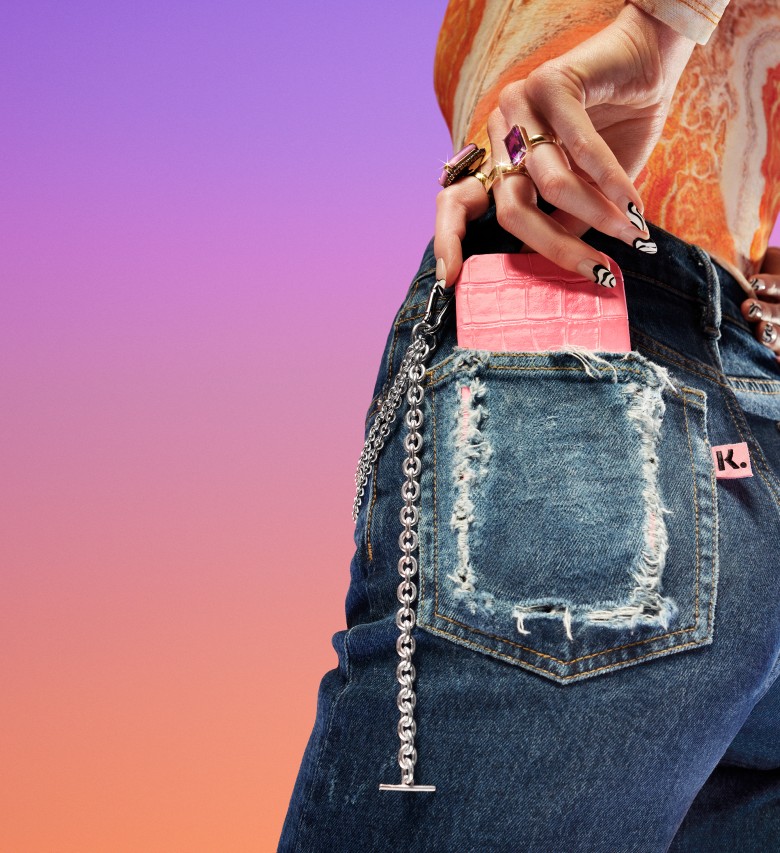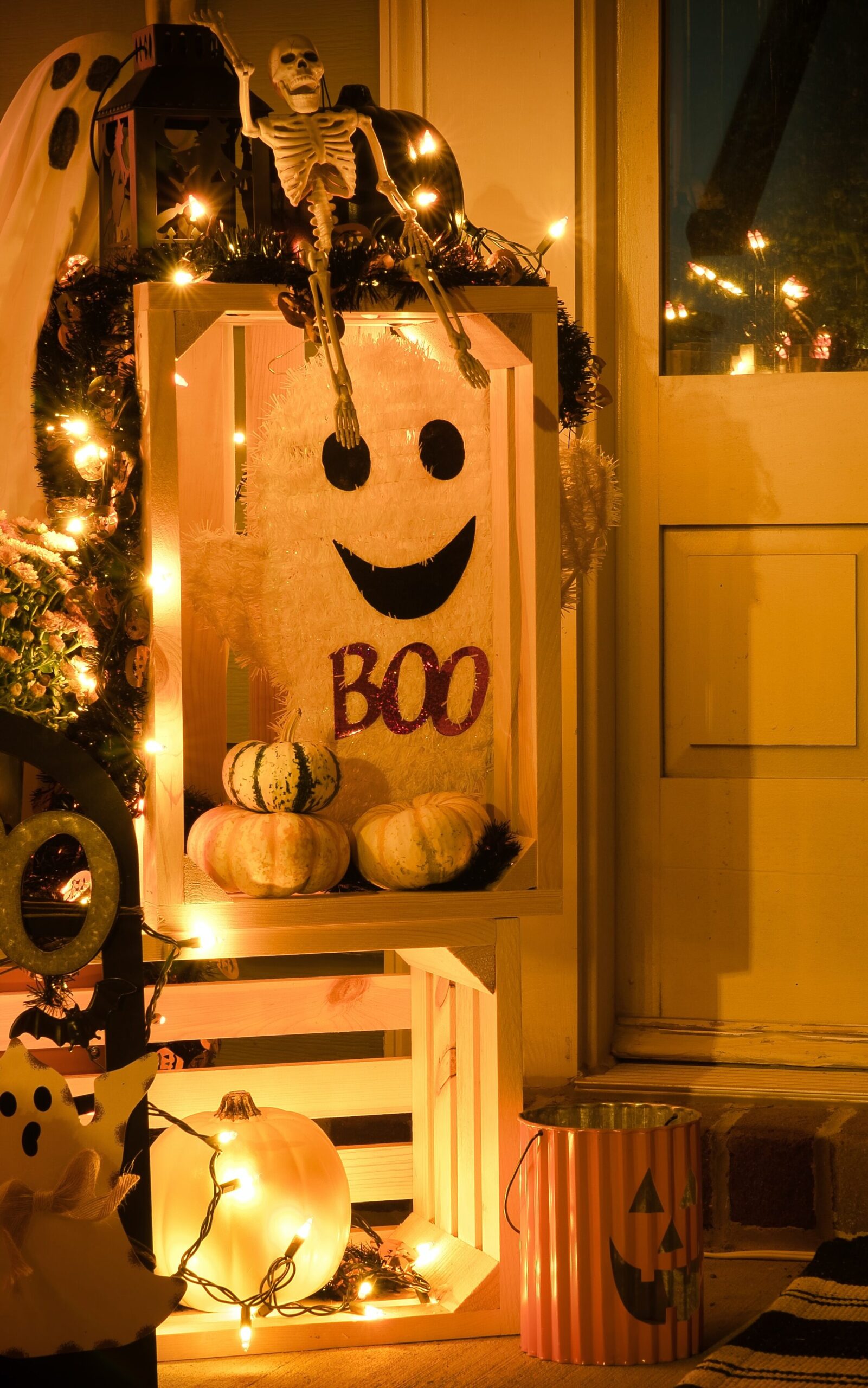
Halloween 2022 🎃
Knock Knock!
Who’s there?
Boo.
Boo who?
… 🤷
Do you know what you’re dressing up as this Halloween? Will you dress up at all?
Whether you’re planning to pull a Heidi Klum and go all-out with your costume or just simply throw a white sheet over yourself à la E.T., there’s no better time of year to inject a little spook into your style.
However, if you’re stuck for inspiration, don’t worry — we’ve got you. In this report, we look at Halloween trends across the globe to find out what people are wearing in 2022.
Let’s get shrieky!
Methodology.
Klarna’s Halloween survey was sent out online during October 2022 in collaboration with research agency Dynata to a representative sample of more than 17,540 consumers across 17 countries and 3 continents, with more than 1,000 respondents per country.
17,540 consumers
18-65 years old
Dressing up for Halloween.
Getting ready for Halloween is an event in itself. But what to wear? We’ve got the low-down on who’s fully committed to spooky season this year and whose ideas are yet to be brewed.
Who’s bringing the costume love?
America! Almost 1 in 3 Americans already have their Halloween costumes ready to go and that number might still grow.
20%
of the people we surveyed around the world want to dress up this year.
37%
of Americans have their costumes planned. 16% are still undecided. If these maybes ⮕ yeses then over half of the population will be dressed up!
Night of the living dead young!
Gen Z and Millennials are far more likely to dress up than older generations, and there is an equal split between genders.
44%
of Gen Z’ers around the world are planning to dress up…
3%
…but Baby Boomers aren’t into it.

Step your game up!
Winning the costume competition might be significantly harder than it was a year ago.
+28%
Make space! The size of this year’s global party is set to increase by 28% compared to last year.
Fit goals
Pulling a great Halloween fit together is no easy task. Firstly, you need to identify your goal. Do you want to be scary? Sexy? Or would you rather make someone laugh?
What do you meme?
Halloween delivers the perfect excuse for spending hours swiping through social media and binge-watching TV. After all, it’s research!
TV series & movies
are the most common sources of inspiration (44%), while ghosts, mummies, vampires, and other classic horror characters follow creepily close behind (41%)
Budget vs blow-out.
How much cash are you prepared to splash on your Halloween get-up?
$87
is the average Halloween costume budget.
57%
will spend between $26 and $100.
6%
already have, or will borrow, everything they need.
Pick your fighter.
Sexy, scary, or funny? Which boxes will your look check?
57%
will go for a scary look.
49%
would rather scream with laughter.
20%
will take the opportunity to show some skin.
An American, an Aussie, and a Frenchman walk into a bar…
Ever wondered whether a person’s nationality influences their Halloween aesthetic? Well, now you know…
The French
are most likely to come dressed scary (70%) while…
Aussies
will likely arrive in something funny (60%) and…
Americans
will probably turn up in something sexy (34%).
A fang-tastic night.
A great costume is about more than just clothes.
Serving (scary) face.
Make-up is an integral part of most great Halloween costumes.
2 in 3
will buy specific make-up for Halloween.
Men
are more likely (75%) to buy make-up compared to women (63%). Gender has a bigger impact than age when it comes to putting makeup on the Halloween shopping list.
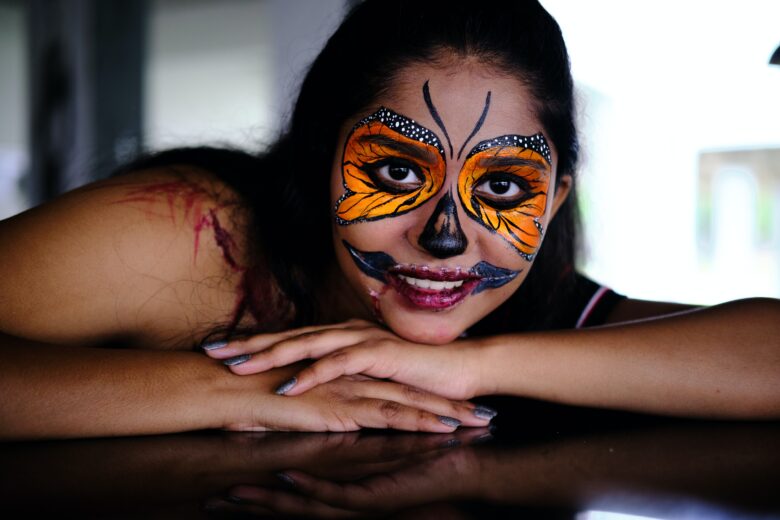
Let the transformation commence!
The best thing about Halloween is that you can become anyone or anything you want. But what is this year’s most popular look?
45%
of Americans will be going for something artistic, far more than in any other country.
Ghosts, goblins, monsters, and other pets.
There’s no better company during a night of spooky festivities than furry family members.
Santa’sSatan’s little helper.
Many pet owners are planning to involve their pets in the festive fun.
28%
of Americans will dress up their pet — that’s double the global average (14%).
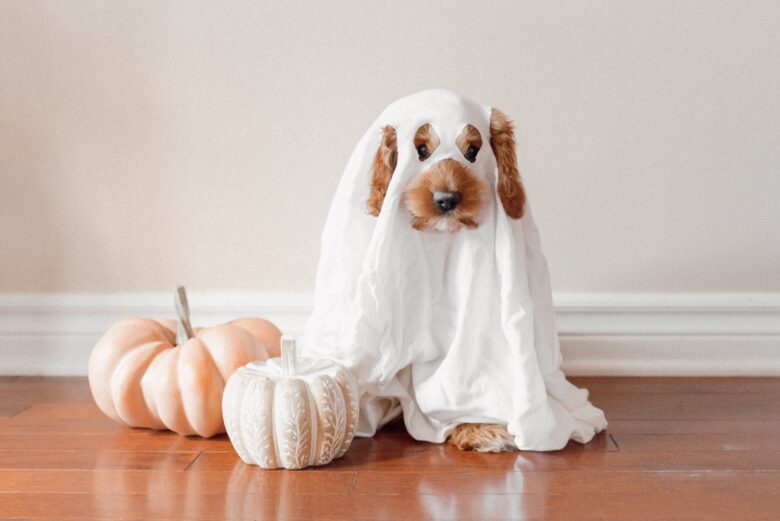
Turning a happy doggo into a scary spider…
…or turning a scary spider into a happy doggo?
Aussies
Aussies are among the most likely to dress up their pet in something scary (70%).
French
Meanwhile, in France people are most likely to dress their pets up as something funny (56%).
Social media memes reign supreme.
They say cats own the internet, so perhaps it’s no wonder that social media trends and memes are the main costume inspiration for pet owners.
41%
take inspiration from social media trends or memes for pet costumes.
Cats vs dogs.
It’s official: Cat owners are more likely to dress up their four-legged friends as something scary, while dog owners will usually take the comic route.
61%
of cat owners will dress up their cats in scary costumes compared to 51% of dog owners.
64%
of those who have both a cat and a dog plan to dress their pets in funny costumes.
Do you like scary movies? 👻
Halloween fun doesn’t have to mean dressing up and going out. Staying in to watch scary moves (and hide behind pillows) is also a scream.
Oh, the horror!
For many Americans, there’s nothing better than a scary movie on Halloween.
Out of all countries…
Americans watch horror movies the most (63%), while the Dutch watch them the least (26%).

Can’t get enough.
Turns out that most people that watch horror movies on Halloween do so because they genuinely love them. Of course, there are a few brave souls who still watch horror films despite dreading the experience!
The Finnish are seemingly the most chill when it comes to watching horror. 33% say they’re unbothered and that it’s “just another movie genre.”
Americans
are the biggest horror movie fans (72%).
Australians & Belgians
are united in their hatred (16%).
Finns
are the most indifferent (33%).
Portuguese
are the most accommodating, mostly watching them when others want to (13%).
“DON’T GO IN THERE!”
The most popular reasons to watch horror movies are nostalgia and social experience. But for some, it’s about picking up survival tips. At least some of us will be prepared for the zombie apocalypse…
44%
say the social experience is the most important reason for watching horror movies, on a global average.
28%
of Australians, Canadians, and the French watch horror to pick up survival tips… yikes!
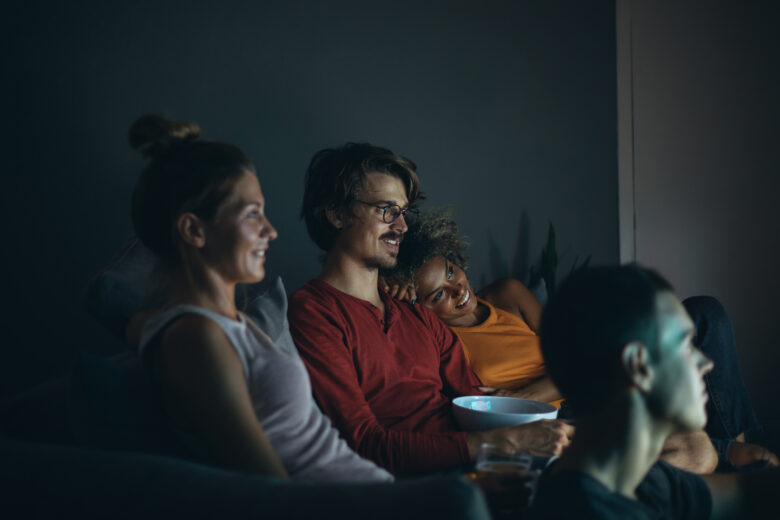
The greatest horror movie of all time is…
Drumroll, please 🥁🥁🥁 After years of debate, we’ve finally settled the Halloween movie debate once and for all. You’re welcome!
Movie fans around the globe agreed that when it comes to horror, the classics come out on top.
Movie fans around the globe agreed that when it comes to horror, the classics come out on top.
1. Halloween (1978)
2. The Exorcist (1973)
3. Friday the 13th (1980)
Which one will you be watching? 🍿
And that’s that.
Thirsty for more knowledge?
Make sure to check out the other reports available at Klarna Insights.




